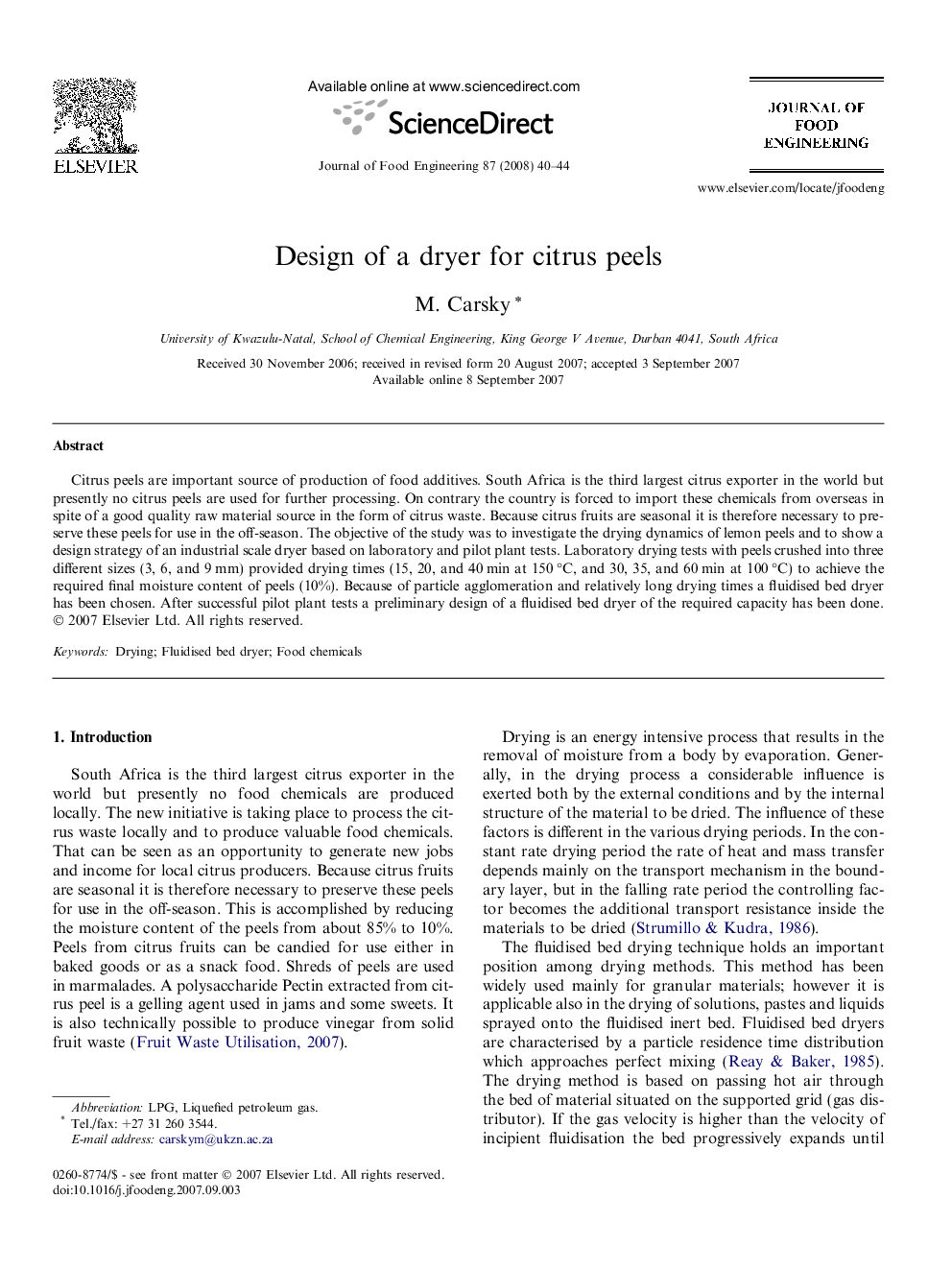| Article ID | Journal | Published Year | Pages | File Type |
|---|---|---|---|---|
| 225559 | Journal of Food Engineering | 2008 | 5 Pages |
Citrus peels are important source of production of food additives. South Africa is the third largest citrus exporter in the world but presently no citrus peels are used for further processing. On contrary the country is forced to import these chemicals from overseas in spite of a good quality raw material source in the form of citrus waste. Because citrus fruits are seasonal it is therefore necessary to preserve these peels for use in the off-season. The objective of the study was to investigate the drying dynamics of lemon peels and to show a design strategy of an industrial scale dryer based on laboratory and pilot plant tests. Laboratory drying tests with peels crushed into three different sizes (3, 6, and 9 mm) provided drying times (15, 20, and 40 min at 150 °C, and 30, 35, and 60 min at 100 °C) to achieve the required final moisture content of peels (10%). Because of particle agglomeration and relatively long drying times a fluidised bed dryer has been chosen. After successful pilot plant tests a preliminary design of a fluidised bed dryer of the required capacity has been done.
